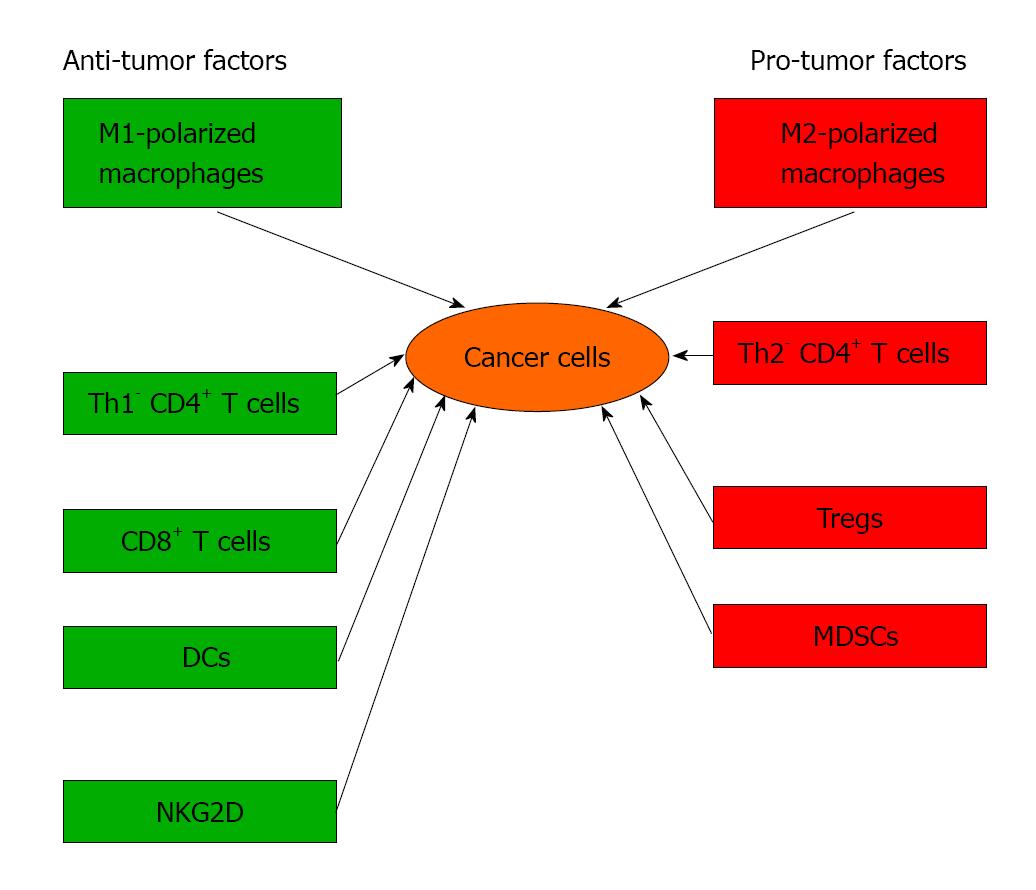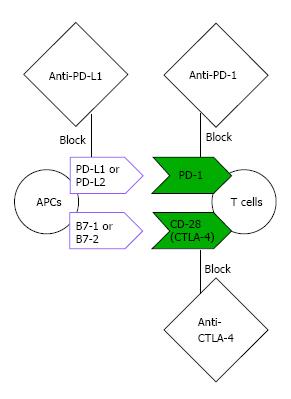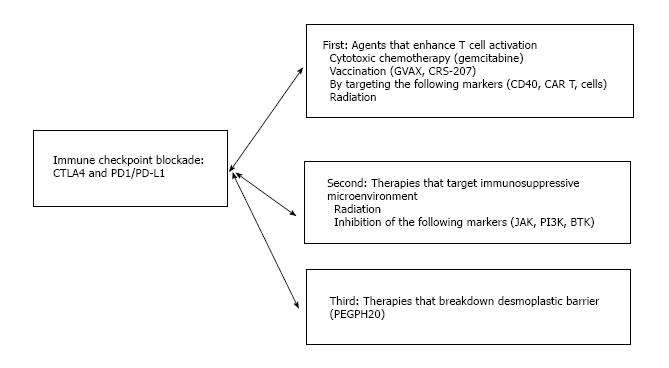Copyright
©The Author(s) 2017.
World J Clin Oncol. Jun 10, 2017; 8(3): 230-240
Published online Jun 10, 2017. doi: 10.5306/wjco.v8.i3.230
Published online Jun 10, 2017. doi: 10.5306/wjco.v8.i3.230
Figure 1 Anti-tumor and pro-tumor factors.
Anti-tumor factors: M1 (classically activated macrophages), Th1-CD4+ T cells (T-helper type 1-cluster differentiation 4 T cells), CD8+ T cells, DC (dendritic cells), NKG2D (natural killer group 2 member). Pro-tumor factors: M2 (alternatively activated macrophages), Th2-CD4+ T cells (T-helper type 2-cluster differentiation 4 T cells) Th2, Tregs (T-regulatory cells), and MDSCs (myeloid-derived suppressor cells).
Figure 2 Immunotherapy basics.
Anti-PD-L1 inhibit PD-L1 (programmed cell death-ligand 1) binding to PD-1 (Programmed cell death protein-1). Anti-PD-1 inhibit PD-1 on T-cell that binds to PD-L1 or PD-L2 (programmed cell death ligand-2) on APC (antigen presenting cell). Anti-CTLA-4 (anti-cytotoxic T lymphocyte antigen 4) inhibit CD28 (cluster differentiation 28) on T cell that binds to B7-1 or B7-2 (ligand of CD28) on APC.
Figure 3 Searching for the optimal combination to maximize the potential of immune checkpoint blockade for the treatment of pancreatic cancer.
CTLA-4: Cytotoxic T lymphocyte antigen-4; PD-1: Programmed cell death protein-1; PD-L1: Programmed death ligand-1; CD40: Cluster differentiation 40; CAR T cells: Chimeric antigen receptor T cells; PI3K: Phosphoinositide-3-kinase; BTK: Bruton tyrosine kinase; JAK: Janus kinase; PEGPH20: Pegylated hyaluronidase.
- Citation: Guo S, Contratto M, Miller G, Leichman L, Wu J. Immunotherapy in pancreatic cancer: Unleash its potential through novel combinations. World J Clin Oncol 2017; 8(3): 230-240
- URL: https://www.wjgnet.com/2218-4333/full/v8/i3/230.htm
- DOI: https://dx.doi.org/10.5306/wjco.v8.i3.230











